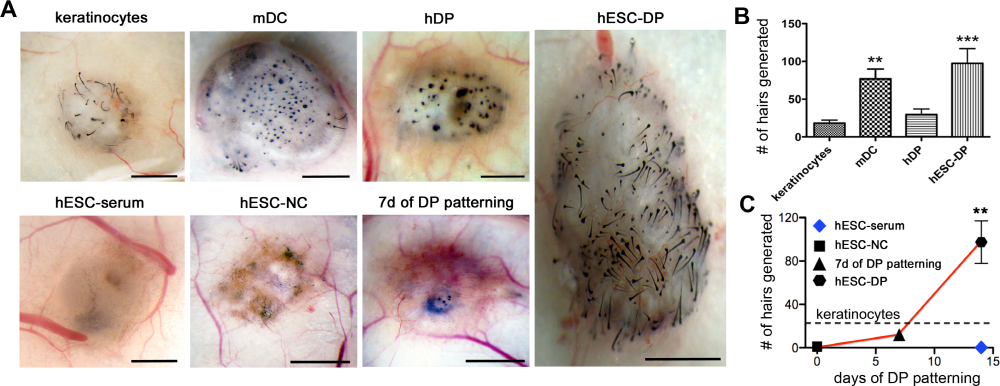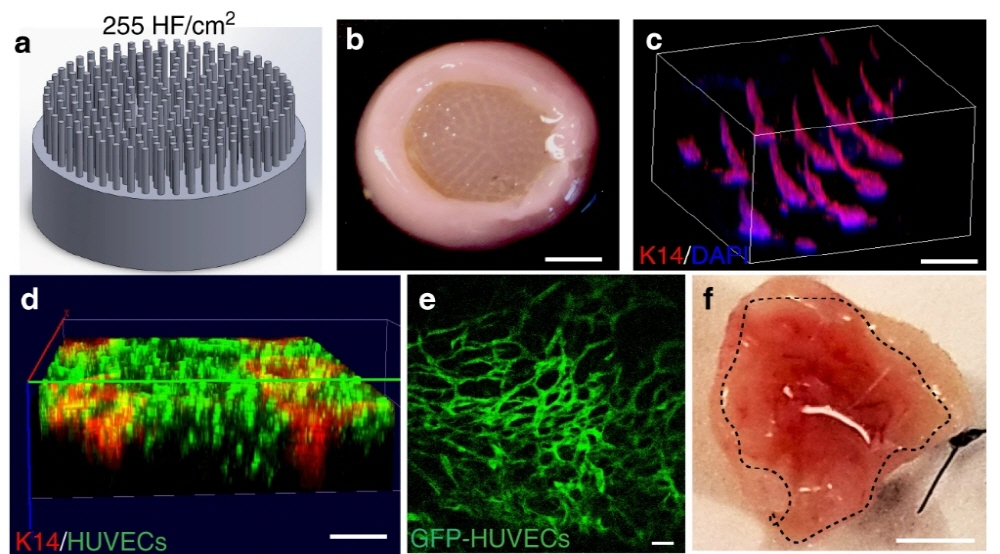
There are many ways to treat thinning hair. However, in recent research, it is said that the method using stem cells and 3D printers is drawing attention.
Treatments such as finasteride, well known under the brand name Propecia, and Minoxidil, sold under the brand name Rogaine, are used as treatments such as androgenetic alopecia due to their hair growth effect. Although treatments have been used for decades, they cannot completely prevent hair loss and restore hair. And these treatments aren’t available unless you can afford to pay around $44 per month.
Scientists are continuing research for hair treatment. In 2018, a study found that hair follicles can prevent baldness by making hair smell specific odors by olfactory receptors that identify odor molecules. However, since this is not a treatment but a prevention, it cannot save a person who is already suffering from hair loss.
Currently, the only solution to improving thinning hair is a hair transplant. In humans, thousands of stem cells called dermal papillae at the bottom of the hair follicle produce one hair. It is known that about 100,000 such hair follicles exist on the human scalp. When the dermal papilla disappears over time, the hair follicle enters a dormant state. Therefore, hair is still present on the scalp of a thin person, but since the hair is dormant, only very thin hair is produced.
Once the hair enters the dormant state, it cannot be recovered. Therefore, in order to improve the thinning of the hair, it is necessary to perform a hair follicle unit surgical transplantation on a separate scalp. This is a hair transplant. In addition to costing about $10,000, a hair transplant requires many healthy hair follicles to remain on the scalp to be transplanted. In addition to the head, follicle unit transplants are sometimes performed on the back or armpits, but such cases are not good in appearance and may cause rejection.
Among these, recent research is seeking ways to use stem cell research and printing technology using 3D printers. In other words, we are looking for a new hair transplant technology that duplicates the hair with a 3D printer and plant it on the scalp.
When it comes to hair transplantation using 3D printers, experts have long said that this technology will still be available in 10 years, but now it is possible to become familiar. It has also succeeded in printing biological cells such as blood vessels and intestines as a transparent gel with a 3D printer, making a heart using human cells, or making skin and bones from biomaterials. Compared to what must work well in such a living body, hair is like a string wrapped around protein filaments. It just needs to be omitted from the scalp. The output is also fairly simple.
Already, startups like Stemson Therapeutics are replicating Bonang. It is attempting to grow hair from stem cells derived from human skin and blood, contract the dermal papilla or hair follicle, and transplant it into the dormant follicle. Jeff Hamilton, CEO of Stimson Therapeutics, said he succeeded in transplanting human hair into mice, and released an image of it.

It is said that the shape of the hair root is an important factor that helps the hair grow in the same direction. When the company transplanted hair into mice a few years ago, the hair came out in a different direction than intended. For this reason, it was predicted that simply transplanting the cloned hair follicle would make the hair appear abnormal, such as coming out from a different angle.
Therefore, the development of hair follicles that can maintain their shape is required. CEO Hamilton presented a solution during the 2019 ISSCR. The method is to direct hair growth by placing an artificial skeleton around the follicles that have been cloned from the morphology. He did not disclose details of the artificial skeleton, but said he would develop it in partnership with pharmaceutical company Allergan. The transplantation of cloned hair follicles using this artificial skeleton is said to begin clinical trials within the next year and a half.

Angela Christi, a professor of dermatology at Columbia University, succeeded in printing a jelly-like shape with a 3D printer to transplant hair follicles and skin nipples into the skin separately. The study, reported to Nature Communications, says it will revolutionize medical treatments such as alopecia and chronic wounds of various types.
However, it also means that customizing the shape with a 3D printer is very expensive. As technology advances, costs will decrease, but it will still take time to use 3D printers to provide hair regeneration at an affordable price. Related information can be found here .


















Add comment